Leaked: New MultiLine IP Phone with IAX2 Support
Disclosure: I should not be publishing this information and the accompanying spy photos. There’s a good chance I may lose my job over this, but I think a lot of our readers may find it interesting and therefore I am sharing it with you here on VoIP Insider.
Some quick background. If you are into Asterisk or Freeswitch then you are probably familiar with IAX2. The IAX revision 2 protocol is used by Asterisk Open Source PBX and FreeSwitch as an alternative to SIP. IAX is short for Inter-Asterisk eXchange and is the native protocol of Asterisk PBX. IAX is used to enable trunking between Asterisk servers as well as endpoints.
From WikiPedia:
The IAX and IAX2 protocols were created by Mark Spencer for Asterisk for VoIP signaling. The protocol sets up internal sessions and these sessions can use whichever codec they want for voice transmission. The Inter-Asterisk Exchange protocol essentially provides control and transmission of streaming media over IP (Internet Protocol) networks. IAX is extremely flexible and can be used with any type of streaming media including video, however it is mainly designed for control of IP voice calls.
The primary goals for IAX were to minimize bandwidth used in media transmissions, with particular attention drawn to control and individual voice calls, and to provide native support for NAT (Network Address Translation) transparency. Another goal is to be easy to use behind firewalls.
The basic structure of IAX is that it multiplexes signaling and multiple media streams over a single UDP (user datagram protocol) stream between two computers. IAX is a binary protocol, designed to reduce overhead especially in regard to voice streams. Bandwidth efficiency in some places is sacrificed in exchange for bandwidth efficiency for individual voice calls. One UDP stream is easier to setup for users that are behind a firewall.
An additional benefit to having a single stream is the added security, which can be implemented very easily. Furthermore, in countries where ISPs are filtering VoIP, IAX can be easily hidden.
For several years, Digium produced an IAX based analog telephone adapter known as the IAXy, or S101i. Digium discontinued production of the S101i some time ago, leaving a bit of a vacuum in the marketplace for users fond of using IAX as an alternative to SIP.
I’m asked all the time why seemingly no manufacturers, including Polycom, Cisco, Aastra, Snom or Grandstream build in IAX2 support into their products, and I never have a great answer for that. The exciting news is that for a few days we have been testing out a brand new SIP desktop IP Phone that also offers IAX2 support!
I can’t tell you much about it, it’s all hush-hush for the moment, but a few details I have been able to glean include:
The phone supports SIP and IAX2. It is a multi-line phone, with dual ethernet and 802.3af PoE support. It will reportedly retail for less than $100.
I also managed to snag a few spy photos and a handful of screenshots, which you can view below. P.S. – Remember, you didn’t hear this from me…..
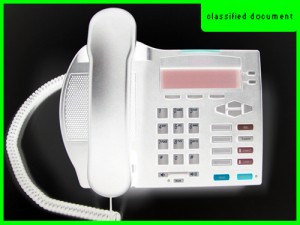

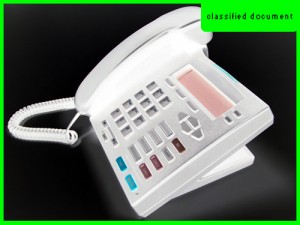

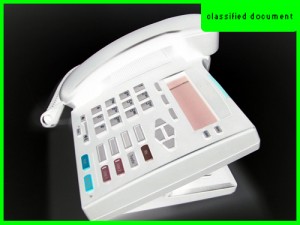
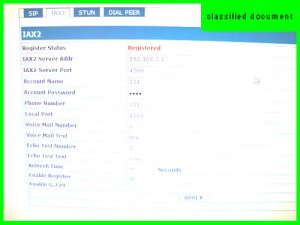
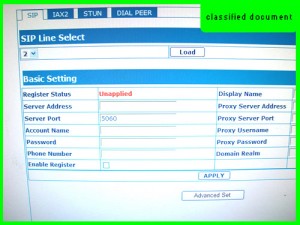
11 Comments
What is the benefit to using IAX2 over SIP?
Yusuf – I could expound on the virtues of IAX2 versus SIP, but why not get the rundown from the gentleman who is behind it. Here is a summary of comments originally posted on VoIP-Info.org by Mark Spencer himself.
1) IAX is more efficient on the wire than RTP for any number of calls, any codec. The benefit is anywhere from 2.4k for a single call to approximately tripling the number of calls per megabit for G.729 when measured to the MAC level when running trunk mode.
2) IAX is information-element encoded rather than ASCII encoded. This makes implementations substantially simpler and more robust to buffer overrun attacks since absolutely no text parsing or interpretation is required. The IAXy runs its entire IP stack, IAX stack, TDM interface, echo canceler, and callerid generation in 4k of heap and stack and 64k of flash. Clearly this demonstrates the implementation efficiency of its design. The size of IAX signaling packets is phenomenally smaller than those of SIP, but that is generally not a concern except with large numbers of clients frequently registering. Generally speaking, IAX2 is more efficient in its encoding, decoding and verifying information, and it would be extremely difficult for an author of an IAX implementation to somehow be incompatible with another implementation since so little is left to interpretation.
3) IAX has a very clear layer2 and layer3 separation, meaning that both signaling and audio have defined states, are robustly transmitted in a consistent fashion, and that when one end of the call abruptly disappears, the call WILL terminate in a timely fashion, even if no more signaling and/or audio is received. SIP does not have such a mechanism, and its reliability from a signaling perspective is obviously very poor and clumsy requiring additional standards beyond the core RF3261.
4) IAX’s unified signaling and audio paths permit it to transparently navigate NAT’s and provide a firewall administrator only a *single* port to have to open to permit its use. It requires an IAX client to know absolutely nothing about the network that it is on to operate. More clearly stated, there is *never* a situation that can be created with a firewall in which IAX can complete a call and not be able to pass audio (except of course if there was insufficient bandwidth).
5) IAX’s authenticated transfer system allows you to transfer audio and call control off a server-in-the-middle in a robust fashion such that if the two endpoints cannot see one another for any reason, the call continues through the central server.
6) IAX clearly separates Caller*ID from the authentication mechanism of the user. SIP does not have a clear method to do this unless Remote-Party-ID is used.
7) SIP is an IETF standard. While there is some fledgling documentation courtesy Frank Miller, IAX is not a published standard at this time.
September 2006: Now there is an IETF Draft to be discovered at October 2006: IETF Draft for IAX2 to be discovered at Sometime between: (the version 03 was published in the mean time) March 30th, 2008: IETF Draft for IAX2, version 4:
8) IAX allows an endpoint to check the validity of a phone number to know whether the number is complete, may be complete, or is complete but could be longer. There is no way to completely support this in SIP.
9) IAX always sends DTMF out of band so there is never any confusion about what method is used.
10) IAX support transmission of language and context, which are useful in an Asterisk environment. That’s pretty much all that comes to mind at the moment.
Yusuf – also worth noting….SIP has clearly and definitevely emerged as the defacto standard for VoIP in my mind. I am not arguing that IAX2 will somehow usurp SIP as the encumbent protocol. Those who are familiar with it will argue that it does have benefits over SIP in certain deployment scenarios, and it’s nice to see it maintained and to see manufacturers continue to support it.
IAX2 is now, by the way, an RFC supported standard. RFC 5456
Perhaps this phone is based on the AR1688 chipset (successor to the PA1688) which has IAX2 and SIP stacks built in. I’m surprised more devices don’t exist that support IAX2, since this chipset is inexpensive and seems to have some good support from the supplier.
Or is this device a new chipset and software design? Having a generic processing IAX2 platform on the market would certainly shift the game a bit.
Is there any XML or other control capability on the screen? Can Asterisk push text or other messages to the system?
JT
For those of you who were wondering about the chipset this phone uses the Broadcom Chipset. It looks like an OEM version of the ATCOM AT620 phone.
atcom tech support said AT620/AT620P has broadcom BCM1190 chipset inside.
whats with all the cloaks and daggers, surely it’s just another cheap chinese handset. I don’t get why all the secrecy unless it is purely for effect? Unless it is a Polycom/Snom/Aastra I am not interested.
@ sean
There’s no cloak and daggers. We simply like to have fun with product launches.
The phone is a Citel C4110. We’ve already sold a few hundred of them and the response to the product has been great.
And just because you’re not interested in the phone, doesn’t mean others feel the same way.
Citel IP Phones – C4110 wow………
@ Alex:
It was a big deal a few months ago when we leaked the information. Note the time stamp 🙂
Based on the web interface screenshots, looks like its based on the same hardware as all the other phones with iax2 support coming out of china which are basically clones and just different brand names.
It wont be a “iax2 multiline” instead it allows several sip, and 1 iax2 line. Worse if its anything like the fanvil phones etc.. it wont allow you to have multiple lines like proper business ip phones by that i mean, you cant assign line1 and line2 to your first provider, and have multiple calls on each line instead each line needs to be registered to a different provider.